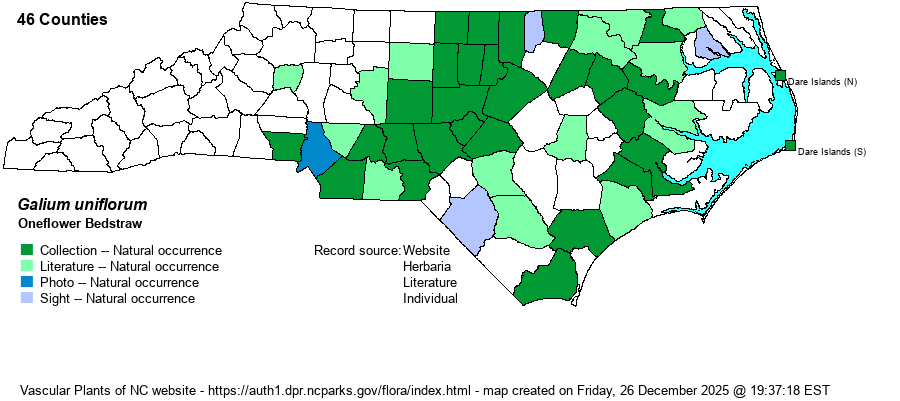| Author | Michaux | |
| Distribution | Essentially throughout the eastern third of the Piedmont (rarely west to Alexander and Gaston counties), and sparingly present across the Coastal Plain, including the Outer Banks.
This is a Southern species, ranging from coastal MD and AR south to central FL and eastern TX. | |
| Abundance | Infrequent to locally fairly common in the lower/eastern Piedmont. Rare to uncommon in the Coastal Plain, typically in sites with richer forested soils. Though RAB (1968) called it "rare" and showed only 6 county records, the species has now been collected from about 30 counties and observed/photographed in many others. It is not really a rare species in the state now, though it likely was just overlooked instead of there being an increase in recent decades. | |
| Habitat | This is a forest species, growing mostly in mesic mixed forests to hardwood forests, including in bottomlands. | |
| Phenology | Blooms and fruits from April to September. However, it is an evergreen species and can be seen in leaf all winter. | |
| Identification | This is a very slender and quite small Galium ranging only to about 8-10 inches tall, usually leaning and with a few branches. The stem is smooth, but the leaves are stiff, shiny, dark green, and evergreen. There are 4 leaves per whorl, each leaf being linear to narrowly oblanceolate, about 3/4-inch long but barely 1/8-inch wide. There are only a few tiny white flowers in the leaf axils, but quite conspicuous are the small but fleshy, black fruit; only this species and G. bermudense have fleshy fruit in the genus. As the species is evergreen, it can be spotted on a winter walk in a mixed pine-hardwood forest or in a bottomland forest. | |
| Taxonomic Comments | None
| |
| Other Common Name(s) | None | |
| State Rank | S2S3 [S3S4] | |
| Global Rank | G4G5 | |
| State Status | | |
| US Status | | |
| USACE-agcp | FACU link |
| USACE-emp | FACU link |

